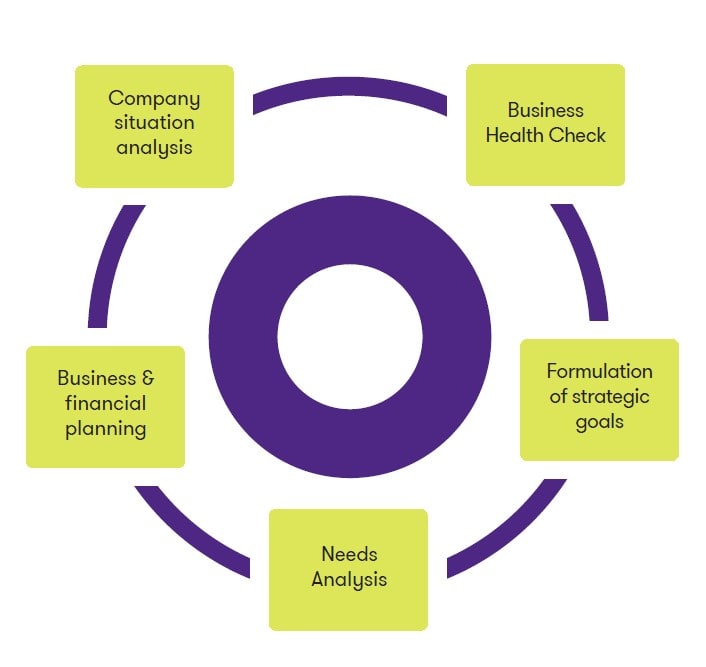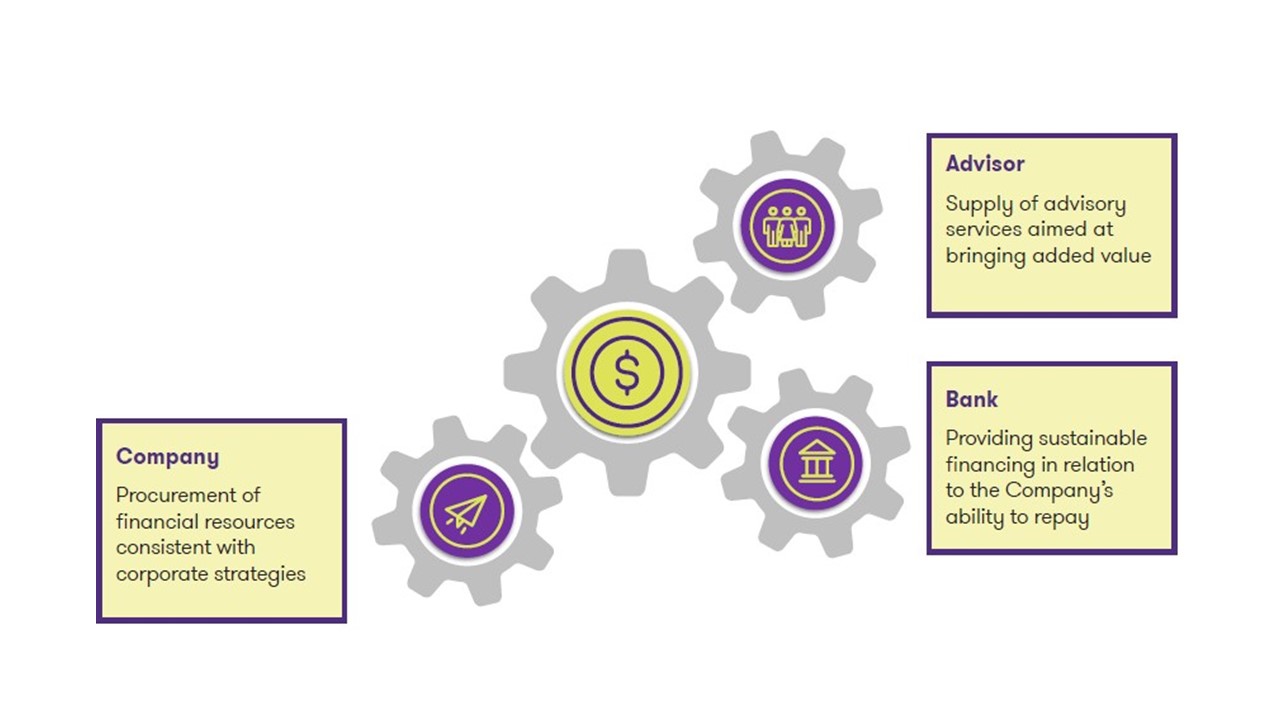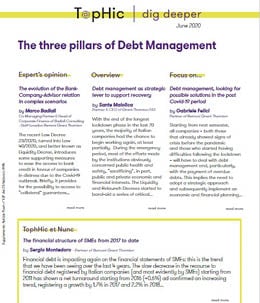-
Transactional advisory services
Find out more about the transactional advisory services of Grant Thornton Financial Advisory Services
-
Valuations
Find out more about the valuations services of Grant Thornton Financial Advisory Services
-
Mergers and acquisitions
Find out more about the merger and acquisition services of Grant Thornton Financial Advisory Services
-
Forensic and investigation services
Find out more about the forensic and investigation services of Grant Thornton Financial Advisory Services
-
Recovery & reorganisation
Find out more about the Recovery & reorganisation services of Grant Thornton Financial Advisory Services
-
Business risk services
Find out more about the business risk services of Grant Thornton Financial Advisory Services
-
Business consulting
Find out more about the business consulting services of Grant Thornton Financial Advisory Services
-
Capital market
Capital market
-
Corporate and business tax
Find out more about our corporate and business tax services.
-
Direct international tax
Find out more about our direct international tax services.
-
Global mobility services
Find out more about our global mobility services.
-
Indirect international tax
Find out more about our indirect international tax services.
-
Transfer pricing
Find out more about our transfer pricing services.
-
Litigation
Our lawyers and accountants can manage all defense measures provided not only by the Italian law, but also by EU regulations and conventions
-
Family business
Find out more about our Family business services.
-
Legal
The client can be assisted in every need and with the same care both on important operations or disputes and on simple matters

-
Back office outsourcing
Find out more about our Back office outsourcing services
-
Business process outsourcing
Find out more about our business process outsourcing services.
-
Compilation of financial statements
Find out more about our compilation of financial statements services.
-
Tax compliance
Find out more about our tax compliance services.
-
Electronic invoicing
Find out more about our electronic invoicing services
-
Electronic storage
Electronic storage is an archiving procedure that guarantees the legal validity of a digitally stored electronic document
-
Revaluation of corporate assets
Find out your civil and fiscal revaluation of tangible, intangible and financial assets
-
Payroll
Complete and customized payroll service, integrated with digital solutions and compliant with Italian and international regulations.
-
Labor consultancy
We help Italian and international companies manage all aspects of their workforce.
-
HR & Payroll Advisory Services
We review contracts, payroll, and risks for extraordinary transactions and we assess tax, labor, and safety risks in outsourcing contracts.
-
Extended services
We provide integrated digital tools to simplify HR management.
-
HR Infinity Portal
The HR Infinity Portal is Zucchetti’s platform designed to centralize communication between the company and its employees.
-
Cybersecurity
GT Digital helps clients structure information security management internal functions, also through partially or totally outsourced functions
-
Agile and Programme Management
GT Digital provides support in the adoption and implementation of different portfolio management
-
Robotic Process Automation
Our “BOT Farm” can rely on digital workers able to help clients in routine activities, allowing employees to deal with more added-value activities
-
Data strategy and management
GT Digital can support clients in seizing the opportunities offered by Big Data, from the definition of strategies to the implementation of systems
-
Enterprise Resource Planning
We support clients in selecting the most appropriate ERP System according to their specific needs, helping them also understand licensing models
-
IT strategy
GT Digital supports clients in making strategic choices, identifying innovation opportunities, comparing themselves with competitors
-
IT service management
We can support with software selection and with the implementation of dedicated tools for the management of ICT processes
-
DORA and NIS 2
The entry into force of the DORA Regulation and NIS2 represents a major step towards the creation of a harmonised regulatory framework
Briefly, it provides for the possibility to access to “collateral” guarantees issued by the State through its entities (Fondo PMI[1] and SACE[2]) whose purpose is granting bank loans to companies affected by the pandemic emergency.
A “deadline” arises from the contents of the regulation, separating “businesses in distress” in two groups, namely:
- Business distress existing prior to COVID19 pandemic emergency, associated with an impairment of the debt positions towards banking system;
- Business distress directly arising out of the pandemic-imposed lock-down.
As far as the first category is concerned, the regulation in point clarifies, also amplifying them, the cases in which the SMEs Fund (Fondo PMI) can intervene. It also provides clarifications on the issuance of guarantees, granting access to entities that were previously excluded, i.e. companies that upon requesting guarantees had exposures highlighted as “inadempienze probabili” (unlikely to pay, UTP) and or “scadute o sconfinanti o deteriorate” (past due).
In short, they shall be UTPs or past due originating from the COVID-19 pandemic emergency. “Doubtful debts” that were Non Performing Exposures (NPE) – as at 29 February 2020 – are excluded, as well as the so-called “distressed” companies - at 31 December 2019 - being classified among distressed businesses as per the EC regulation.
In compliance with COMMISSION REGULATION (EU) No 651/2014 an ‘undertaking in difficulty’ means:
- an Srl that has been in existence for at least three years and whose accumulated losses exceeding reserves are more than half of its subscribed share capital;
- an snc or sas whose losses exceed half of own funds (in this case too, they has to be in existence for three years);
- a company subject to collective insolvency proceedings or that fulfils the criteria for being placed in collective insolvency proceedings. (including SMEs to which domestic law provisions on the so-called “over-indebtedness” refer);
- a company that in the past two years had the debt/net equity ratio greater than 7,5 and the EBITDA/interest coverage ratio below 1,0.
In order to keep ongoing concern situations, although with some operational disruptions determined by the virus outbreak, the Liquidity decree also provides for a kind of “suspension” of the going concern for FYs 2019 and 2020 for those “healthy” companies that, in the lack of Covid-19, would have faced no issues.
The going concern principle is not undermined, but there is an attempt to isolate the COVID-19 phenomenon as an element that might compromise its maintenance. The existence of going concern conditions prior to the COVID-19 outbreak will thus have to be associated to the “foreseeable” existence of post COVID-19 going concern.
Therefore, the simplification introduced concerning the “freezing” of this principle will imply the need to pay higher attention - and with more difficulties if compared with the past - to the business prospective analysis.
It will indeed be necessary not only to highlight and isolate the effects the pandemic emergency has caused and will cause in 2020 on the business performance as well as on the economic and financial balances of the company, but also to have the skills to organise the Company to relaunch after the crisis.
The difficulty to define the reference scenario in which the company will have to compete will be another complex issue. A scenario that surely will be different from the one existing prior to Covid-19.
In our opinion, this exception to the traditional valuation standards is not a guarantee, for the various players involved in the decision-making process needed to grant a loan, of not incurring in other types of problems. Additionally, for the entrepreneur it does not represent an alternative to the rightful decision-making process that has to be developed in order to have access to back credit.
It is evident that risks such as the misuse of credit and the complicity in the misuse of credit, as well as changes in the composition of the company's liabilities further to the access to loans backed up by the SMEs Fund or SACE (credit positions that become preferential) or even material risks of incurring in far more serious offences (e.g. bankruptcy or complicity in this offence) are not superseded by the provision of “freezing” the going concern.
Covid-19 and the state support measures to face the companies’ liquidity crisis the lock-down brought with it, do not modify the reference scenario that should have been already characterised by proper funding strategies.
Our opinion is that the facilitating measures granted (state guarantee on bank financing) and the suspension of the “going concern” assumption (referred to the peculiarities of the intra-Covid period) do not represent a simplification in making decisions on financing. On the contrary, the discontinuity we will record in the market and in the companies’ post-lockdown competitive environment already requires entrepreneurs to have an innovative approach to its own analysis and decision-making process aimed at requesting new finance or at debt restructuring.
A path that leads to the identification of the correct financing (o re-financing) instrument only at the end of the process that includes analysing the company’s current situation, formulating medium/long-term goals, stating the financial request and verifying its feasibility.

The Debt Advisor’s aim is to support companies along their strategic management path. This path, starting from the analysis of the company’s current situation, enables crisis management with a view to relaunch and, consequently, with a view to feasibility and utility of the financing the bank should grant.
Leaving the idea to redesign a medium-long term vision now, to fully concentrate on short-term needs can lead the company in a state of total passivity, in a condition of strategic dullness that may be lethal, bearing its effects even after the actual emergency period. The proposed model, on the contrary, allows to bond together the concepts of going concern and crisis management on a diverse and primary level: i.e. strategy.
This way, we no longer discuss about “going concern” but about a Business Continuity Management System, nor do we discuss about “crisis management” but about Crisis Management System, precisely in order to highlight the need to develop a holistic approach to entrepreneurial risk as the apex of a pyramid of skills that fits into the decision-making phase. In practice, this is to state the priority of strategy compared to operations and, at the same time, to acknowledge that the bond existing between the two levels of decision and action is not linear, but circular.
The approach to “continuity” and to the “emergency” management becomes part of the strategy, not only preventively but also proactively, influencing how medium/long-term goals - to be preserve in the implementation phase - shall be set.

The unique key to circularly liaise strategy and operational activities in a continuum of decisions and actions is to manage knowledge and its dynamics, the so-called “Knowledge Dynamics Management”. It is clear to many that the worst contingency our Country had to face in this pandemic emergency refers to skills, at all levels, from politics to entrepreneurship, to each single individual who is a member of a bewildered and puzzled community.
This is the new scenario that accompanies the Debt Advisor’s activity, on the assumption to tie in one unique system the often too separated Bank-Advisor-Company trinomial, thus allowing to finally overcome individual behavioural logics, focused on trying to have own personal interests prevail, which are often identifiable in:
- the organisation of the system of guarantees, the pricing of the operation and the choice of the financial instrument – by the Bank;
- the myopic financial procurement - by the Company;
- the closing of the deal – by the Advisor.
This logic has now to be considered as outdated. The role of the Debt Advisor is nowadays even more strategic than in the past, as it is aims first of all to assist the Company with its real financial health-check, to discuss with the management in devising medium/long-term strategies, in finding the best financial instrument to reach the goals set, to assess the economic and financial viability of the request submitted to the Bank.
Through this approach, it will be possible to create mutual trust among the three players of the process and ease the application procedures and decision-making process, consequently determining the issuance of financing that will enable to create an aggregate value that is the sum of the value achieved by each single player involved.

[2] SACE is the Italian State-owned company operating in the financial and insurance sector and specialised in particular in credit insurance.

